
Across the bustling cities and serene landscapes of the Philippines, a common beauty challenge unites Filipina women. Transcending age and lifestyles, a significant number of them are battling hair damage. This isn’t a mere assumption; recent research by Try & Review underscores this pervasive concern, offering deep insights into the hair care challenges faced by Filipina women.
This article delves into the findings from a comprehensive survey conducted in February 2024, involving 1,701 women across various regions of the Philippines. It aims to shed light on the extent of hair damage concerns among Filipinas, exploring the factors contributing to this issue and its impact on their daily lives and self-perception.
What’s Really Causing Bad Hair Days Amongst Filipinas
When asked to describe a bad hair day, many Filipinas have mentioned dryness, frizz, split ends, tangled hair, etc. Indeed, they are not only unsightly to the eye, difficult to manage, they also make us feel less confident. Unbeknownst to them, these are actually symptoms of hair damage – the underlying cause to their bad hair days.
How do you define a bad hair day? Please elaborate.

The Real Culprit: Hair Damage!
Hair damage and solutions in the Philippines is not just a minor issue but a widespread concern affecting a vast majority of women. The Try & Review survey highlights that a vast majority of Filipina women face hair damage issues, with 92% of Filipinas experiencing some level of hair damage.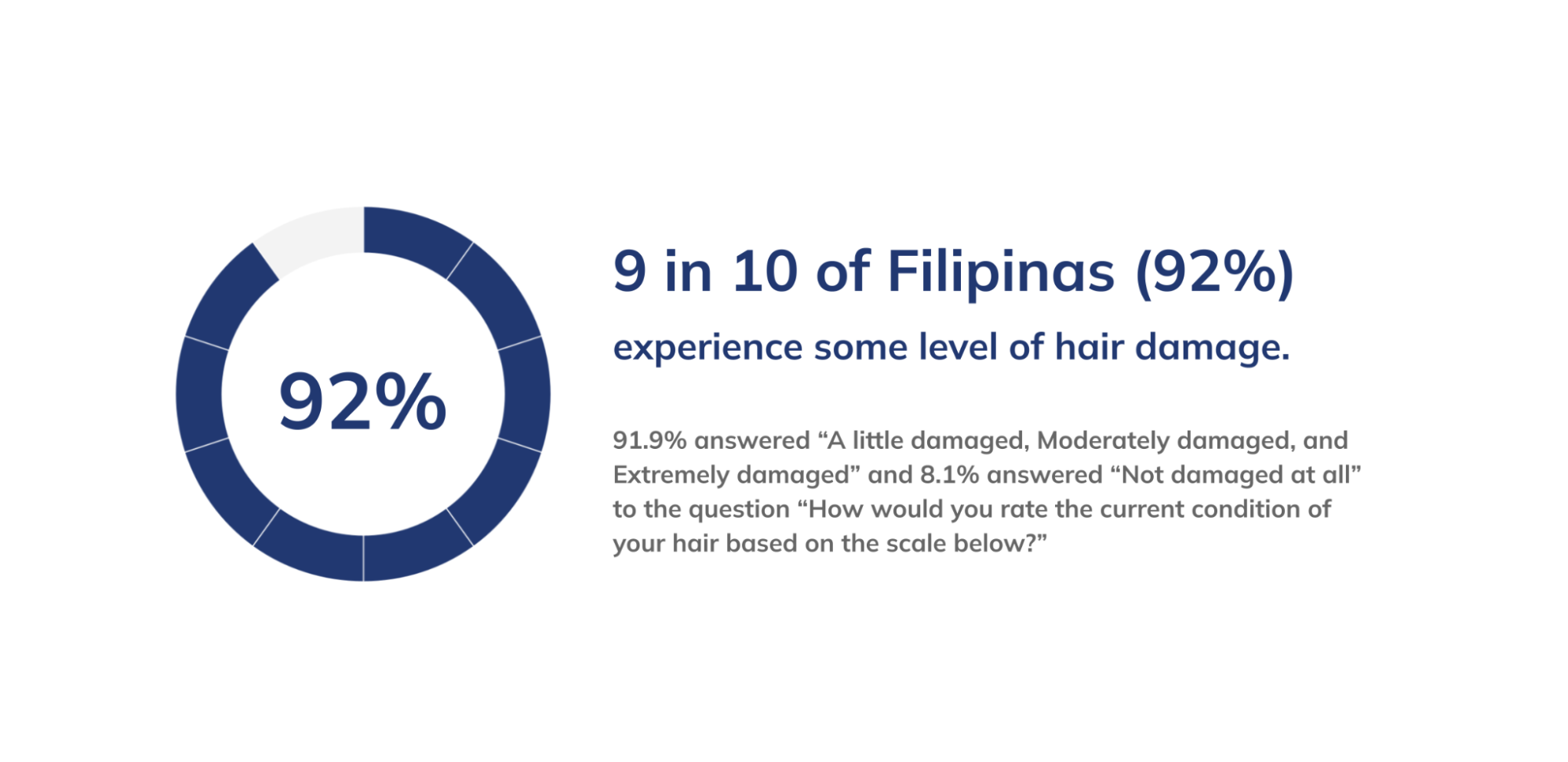
The prevalence of hair damage is further segmented across various regions, reflecting a nationwide concern that transcends geographic boundaries. The number of Filipinas suffering from hair damage is reported to be higher in urban areas like Metro Manila, where 93% report hair damage concerns.
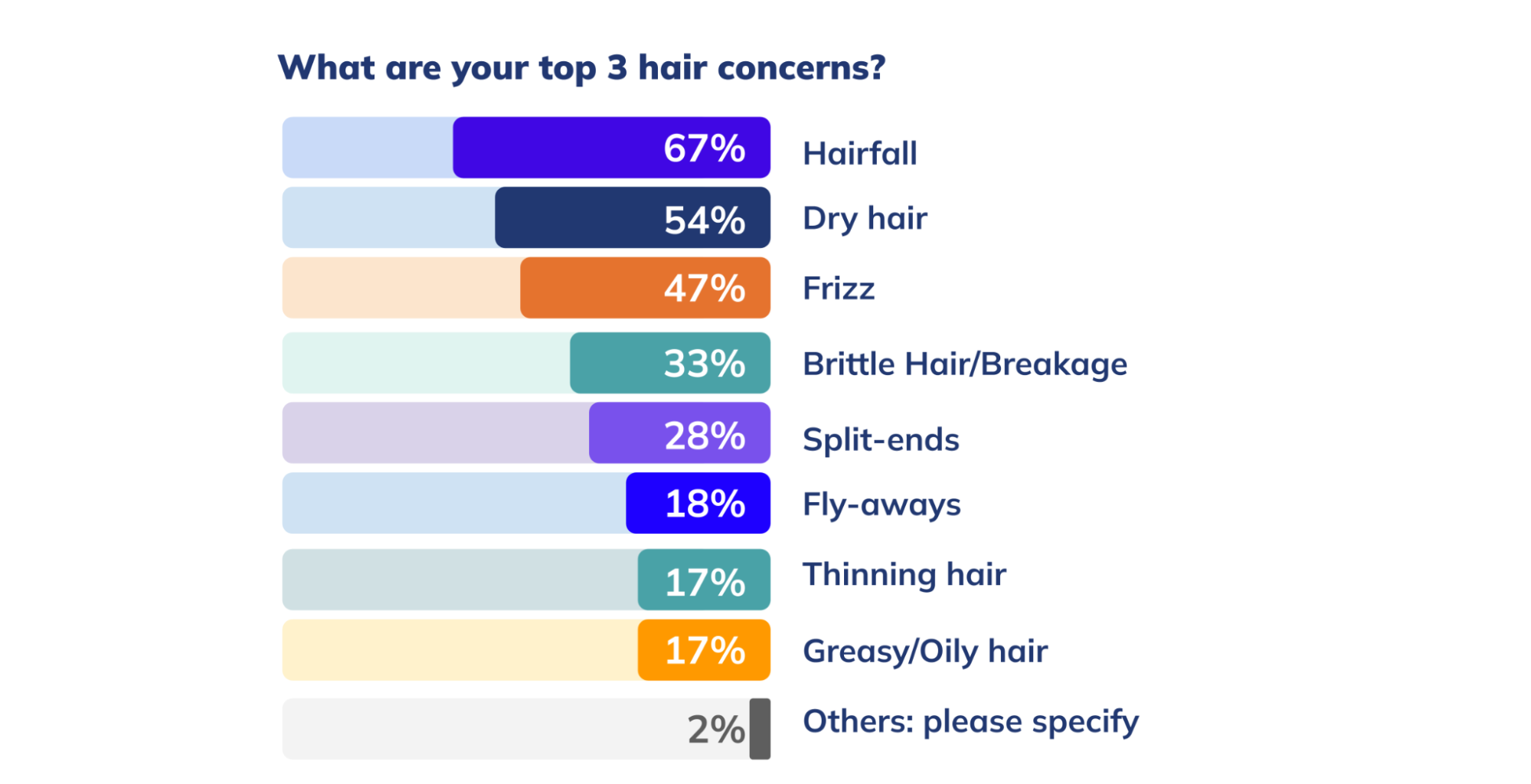
The primary hair concerns reported are hairfall (67%), dry hair (54%) and frizz (47%), indicating widespread distress and dissatisfaction with their hair health.
Whether in the bustling cities of Metro Manila or the rural landscapes, hair damage remains a significant worry for women across the country and common causes of damage identified include coloring or dyeing, with 61.4% of Filipinas acknowledging its harmful effects, and bleaching, cited by 50.7%.
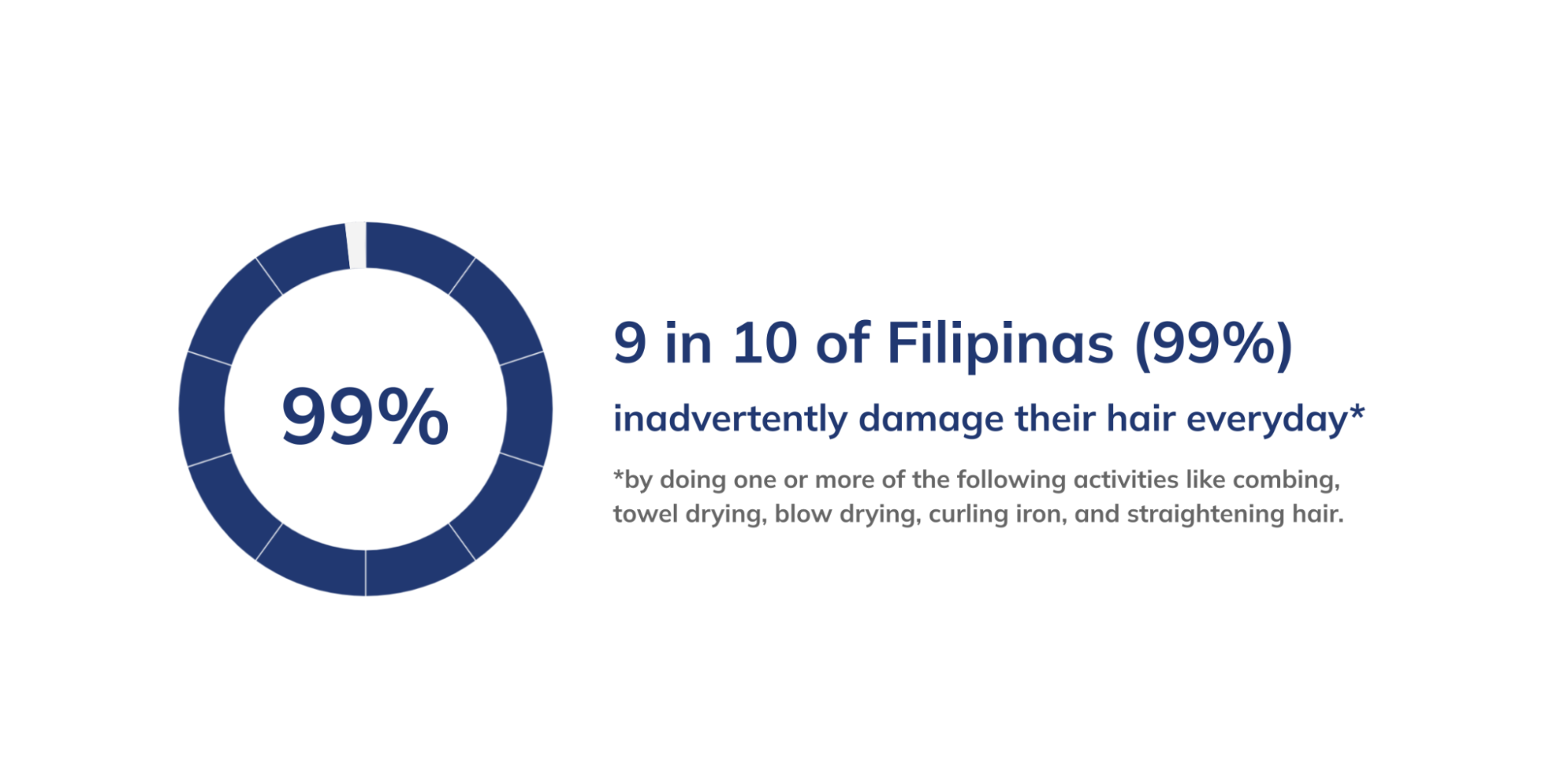
Moreover, a staggering 99% of women surveyed inadvertently contribute to this damage daily, pointing to a critical need for awareness and education on proper hair care practices and a lack of access to suitable hair care resources.
The Economic and Emotional Cost of Hair Damage
The financial implications of hair damage are noteworthy. The data shows that a considerable percentage of Filipinas invest in hair care products and treatments, with over half of the women with hair concerns resorting to monthly salon treatments, and 82% of them spending money in remedial hair care. This expenditure reflects not only the economic cost but also the value that Filipina women place on achieving and maintaining healthy hair.
Beyond the numbers, the survey reveals the emotional toll hair damage takes on Filipinas. The commitment to such treatments highlights the desire among Filipina women to restore their hair’s health and vitality, often at a considerable personal and financial cost.
This emotional impact is profound, with less than one in four Filipinas satisfied with their hair condition and 93% of them believe their hair has not reached its full beauty. This dissatisfaction can affect self-esteem and overall well-being, making hair damage and solutions not just a physical issue but an emotional one that resonates deeply with their identities and how they perceive themselves, pointing to a desperate need for effective hair care solutions.
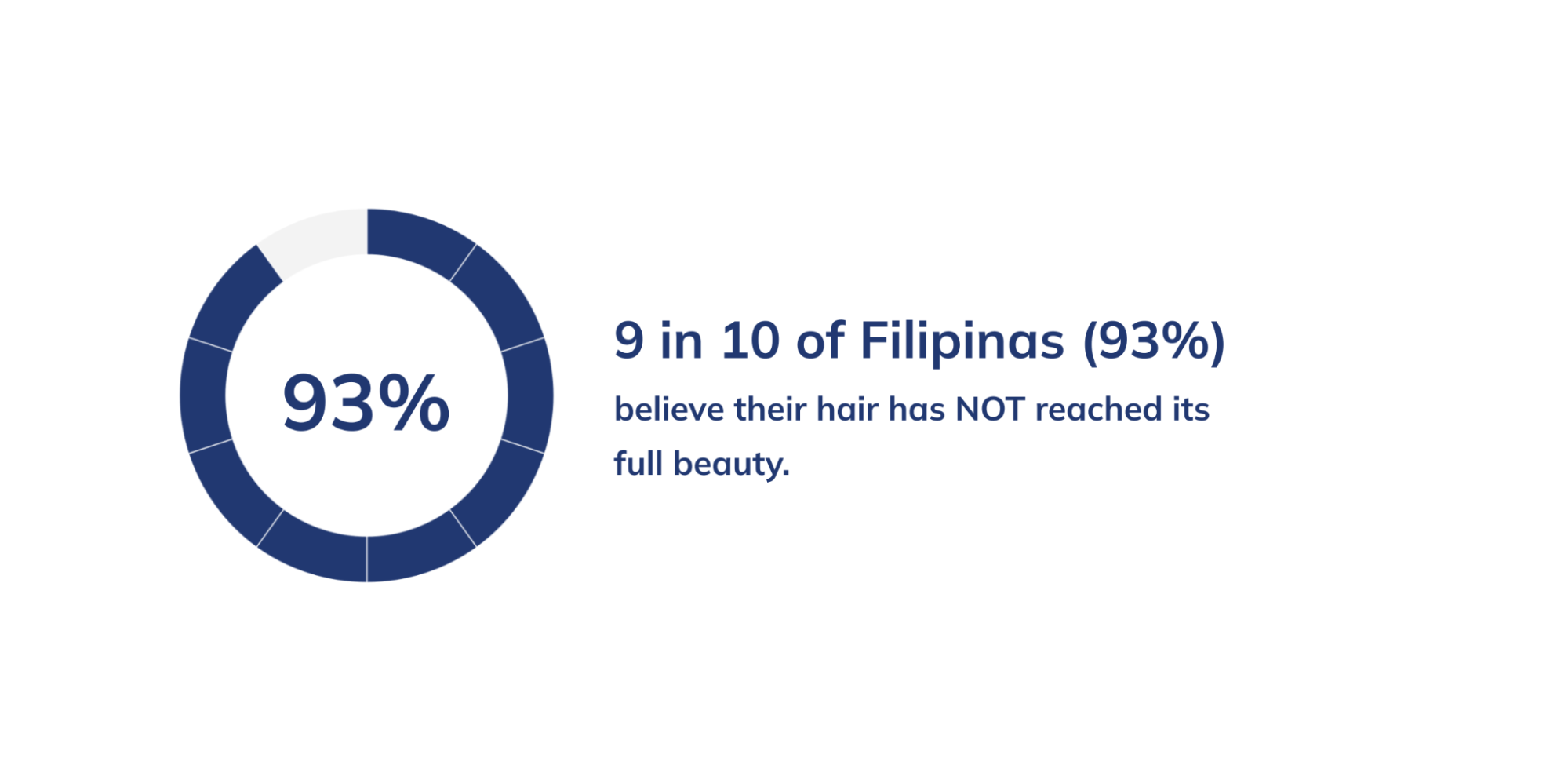
Attitudes and Perceptions Toward Damaged Hair
Filipinas hold specific views about what constitutes beautiful hair, with 68% associating it with softness and smoothness, and 55% equating it to healthiness.
Despite these ideals, a significant number feel helpless in addressing their hair woes, with 4 in 5 yet to find a solution to their hair damage, underscoring a critical gap between their hair care goals and the reality of their situation.
4 in 5 women have yet to find a solution to their hair damage
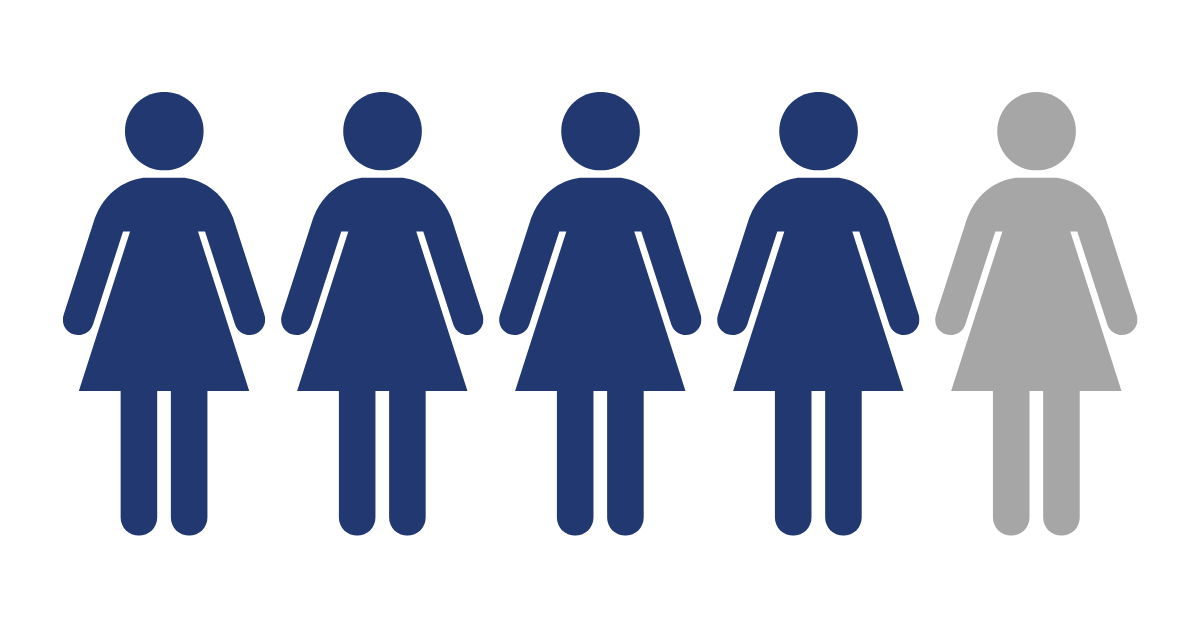
Moreover, the fear of hair damage profoundly influences daily decisions, with 96% of Filipinas consciously avoiding daily damage aggressors, demonstrating a proactive approach to preventing further harm. This cautious approach reflects a deep-seated concern over hair health and a collective desire for improvement and empowerment in hair care practices.
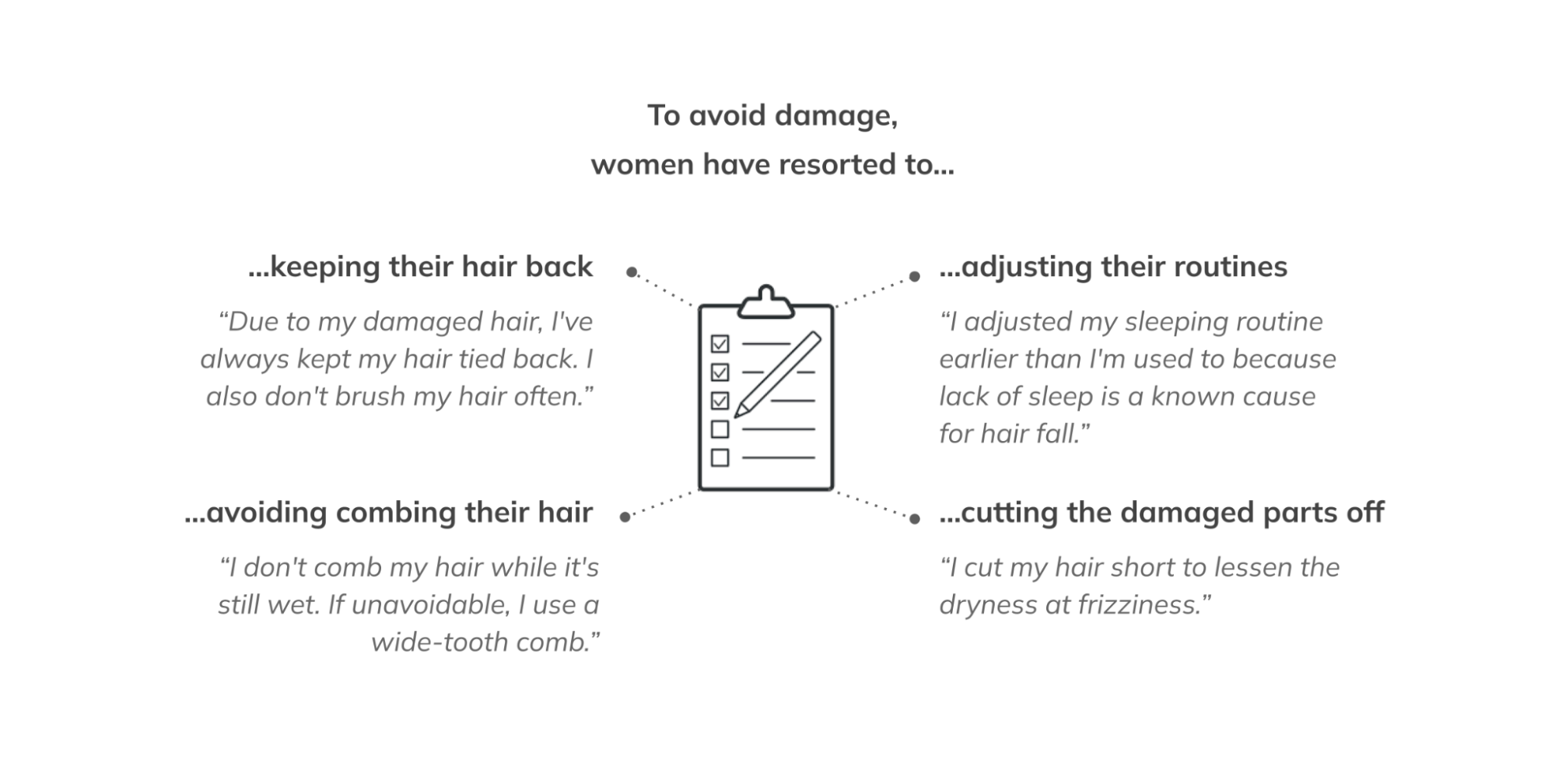
Regret over past hair treatments is common, with a significant portion of women wishing they had never undergone certain procedures due to the resultant damage. This sentiment reflects a broader issue within the beauty and hair care industry, where the long-term health of hair is often sacrificed for immediate aesthetic appeal.
Only a quarter of Filipina women feel positive about their hair, highlighting a deep-seated need for improved hair care education and solutions that align with their hair health ideals.
The industry and community must address this by providing more accessible information and effective products that empower women to achieve their desired hair outcomes without compromising hair health. And as a matter of fact, 82% of Filipinas believe hair damage can be undone!
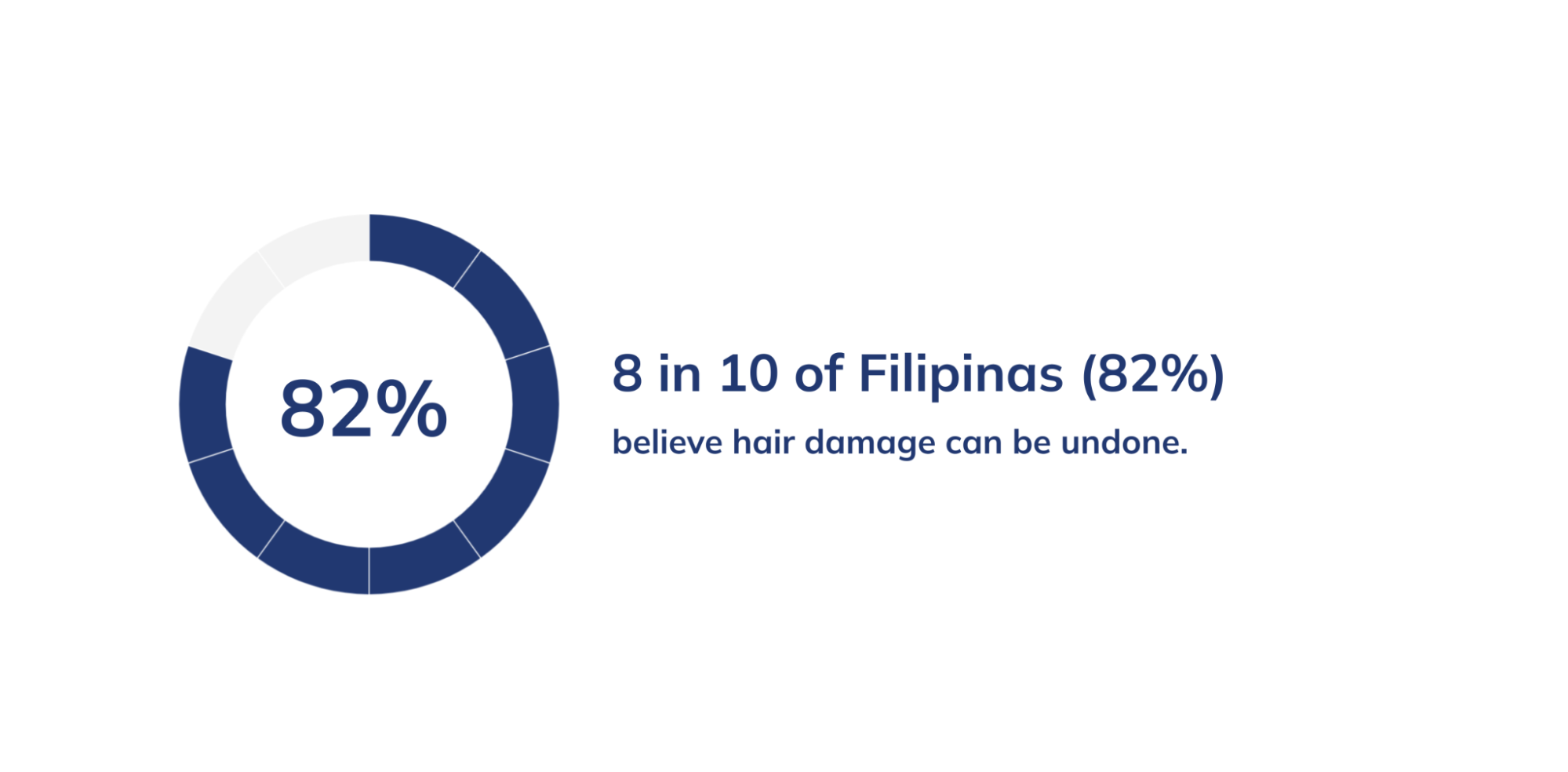
This study was done by Try & Review in partnership with Dove, the world hair expert in damage repair. The insights from this survey paint a vivid picture of the hair damage landscape among Filipinas. It’s an issue that spans across economic, emotional, and societal dimensions, affecting a vast majority of women across the Philippines. Yet, it also presents an opportunity for change and improvement, encouraging a shift towards more informed, proactive hair care strategies. For over 60 years, Dove has been at the forefront of the damage repair revolution, introducing the newest technologies to empower women to care for their hair best. Follow Dove HERE to stay up to date on the latest in this space!




















